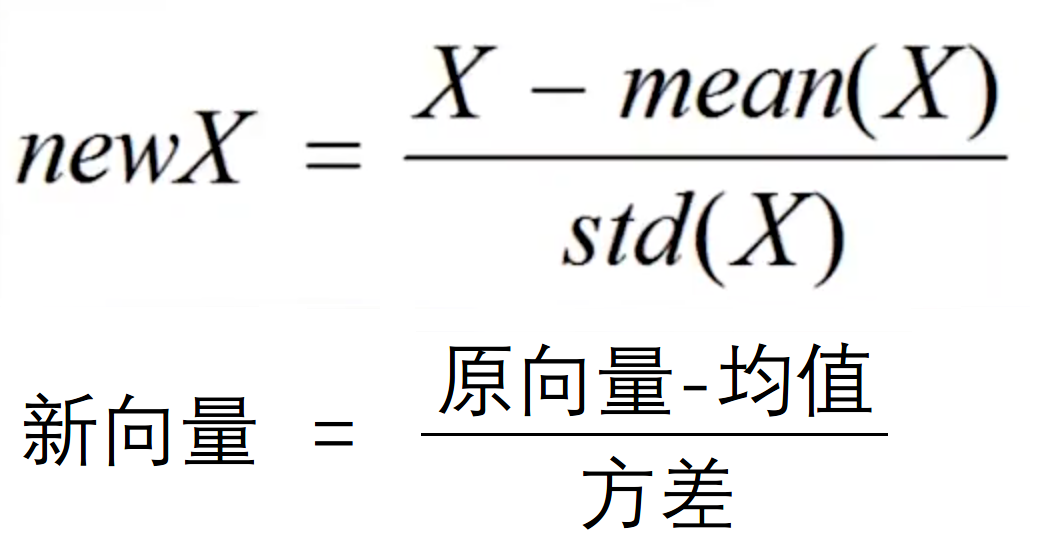一、前提
本文内容是在学习浙江大学胡浩基“机器学习-支持向量机”视频过程中整理出来的,具体可以观看B站视频。
最终使用matlab程序解决了兵王问题。
二、兵王问题
国际象棋的兵王问题:棋盘上黑方只剩一个王,白方剩一个王 一个兵,棋局只有两个结果:“白方将死黑方获胜”或者“和棋”,这个问题属于二分类的问题。这里要利用支持向量机解决这个问题,实现在不告诉计算机国际象棋规则的前提下,让计算机可以根据棋子位置判断棋局的结果。
三、数据集
用到的数据集为UCI Machine Learning Repository,检索关键词为Chess (King-Rook vs. King),链接直达,点进去之后可看到krkopt.data。

数据集一共包含28056个数据,具体内容解释如下图所示,数据集中一共有2796个“和棋”样本(正样本),25260个“白方胜”样本(负样本)。

四、LIBSVM工具包
LibSVM是支持向量机的工具包,当前版本3.25,官网链接直达
matlab安装LibSVM,网上有很多教程,可以参考链接
五、程序设计
- 随机取5000个样本进行训练,其余的样本进行测试;
- 对所有样本进行归一化操作;

- 设置支持向量机的各种参数,;
(1)“-s”参数:表示SVM的不同形式,根据目标函数进行选择,这里选择0;
(2)“-t”参数:表示支持向量机的核函数K(X1,X2),
0:表示线性内核(linear),该内核的计算结果 与 不使用核函数结果一致,
1:表示多项式内核(ploy),复杂度可以调节,指数d越大,映射维度也越高,
2:表示高斯径向积内核(rbf核),σ是人为设置的超参数,映射函数的维度是无限的,实际中最常用,
3:表示sigmoid内核(tanh),β和B是人为设置的超参数,映射函数的维度也是无限的,
4:表示自定义内核,需要知道矩阵K;
(3)“-c”参数cValue:原问题中的C或对偶问题限制条件中的C;
(4)“-g”参数gammaValue:与核函数相对应,不同的核函数g的设定都不一样。
六、Matlab程序
经测试,视频中的程序不能正确运行,研究代码后发现,问题主要出现在数据读取和预处理过程中,我在源程序的基础上进行了修改,并加上了一些备注。修改后程序顺利运行,共用时295秒。需要的大家可以测试一下,有问题评论交流。
备注:我使用的是matlab 2016a;测试集来自UCI Machine Learning Repository;LibSVM工具箱为3.24版本。
具体代码如下:
clear all;
% Read the data.
fid = fopen('krkopt.DATA');
%c = fread(fid, 3); %这行注释掉
vec = zeros(6,1);
xapp = []; %用来存放棋子的位置
yapp = []; %用来存放棋局结果
while ~feof(fid) %检测流上的文件结束符,如果文件结束,则返回非0值,否则返回0
string = []; %用来存放每次读取的一行六个数据
c = fread(fid,1); %每次读取一个字节的数据
%flag = flag+1; %可以注释掉,没发挥作用
while c~=10 %每行读取结束后,最后一个字节数据为10
string = [string, c]; %将读取到的数据保存到string[]中
c=fread(fid,1); %继续读取下一个字节的数据
end;
%fread(fid,1); %这行注释掉
if length(string)>10
vec(1) = string(1) - 96; %以下六行是棋子坐标数据的转换,具体可以看ascii码对照表,
vec(2) = string(3) - 48;
vec(3) = string(5) - 96;
vec(4) = string(7) - 48;
vec(5) = string(9) - 96;
vec(6) = string(11) - 48;
xapp = [xapp,vec]; %将转换后的数据存入xapp[]
if string(13) == 100 %判断每行最后一个单词首字母是否为小写的d,是则标记为1,否则标记为-1
yapp = [yapp,1];
else
yapp = [yapp,-1];
end;
end;
end;
fclose(fid);
[N,M] = size(xapp);
p = randperm(M); %打乱训练样本
numberOfSamplesForTraining = 5000;
xTraining = [];
yTraining = [];
for i=1:numberOfSamplesForTraining %获得训练集
xTraining = [xTraining,xapp(:,p(i))];
yTraining = [yTraining,yapp(p(i))];
end;
xTraining = xTraining';
yTraining = yTraining';
xTesting = [];
yTesting = [];
for i=numberOfSamplesForTraining+1:M %获得测试集
xTesting = [xTesting,xapp(:,p(i))];
yTesting = [yTesting,yapp(p(i))];
end;
xTesting = xTesting';
yTesting = yTesting';
%%%%%%%%%%%%%%%%%%%%%%%%
%Normalization归一化
[numVec,numDim] = size(xTraining);
avgX = mean(xTraining); %求均值
stdX = std(xTraining); %QQ方差
for i = 1:numVec %训练集归一化:每个样本都减掉均值再除以方差
xTraining(i,:) = (xTraining(i,:)-avgX)./stdX;
end;
[numVec,numDim] = size(xTesting);
for i = 1:numVec %测试集归一化
xTesting(i,:) = (xTesting(i,:)-avgX)./stdX;
end;
%%%%%%%%%%%%%%%%%%%%%%%%%%%%%%%%%%
%SVM Gaussian kernel 高斯径向积内核
%Search for the optimal C and gamma, K(x1,x2) = exp{-||x1-x2||^2/gamma} to
%make the recognition rate maximum.
%首先需要对C和Gamma两个参数的取值进行初步搜索,c的取值范围是:2^-5--2^15,gamma的取值范围:2^-15--2^3,该范围是基于人工的经验;
%对数据进行交叉验证,初步找出识别率最高的c与gamma的组合
CScale = [-5, -3, -1, 1, 3, 5,7,9,11,13,15];
gammaScale = [-15,-13,-11,-9,-7,-5,-3,-1,1,3];
C = 2.^CScale;
gamma = 2.^gammaScale;
maxRecognitionRate = 0;
for i = 1:length(C)
for j = 1:length(gamma)
cmd=['-t 2 -c ',num2str(C(i)),' -g ',num2str(gamma(j)),' -v 5']; %设置支持向量机的参数
recognitionRate = svmtrain(yTraining,xTraining,cmd);
if recognitionRate>maxRecognitionRate
maxRecognitionRate = recognitionRate
maxCIndex = i;
maxGammaIndex = j;
end;
end;
end;
%进一步缩小搜索范围,再次进行交叉验证,找出识别率最高的更精确的c与gamma的组合
n = 10;
minCScale = 0.5*(CScale(max(1,maxCIndex-1))+CScale(maxCIndex));
maxCScale = 0.5*(CScale(min(length(CScale),maxCIndex+1))+CScale(maxCIndex));
newCScale = [minCScale:(maxCScale-minCScale)/n:maxCScale];
minGammaScale = 0.5*(gammaScale(max(1,maxGammaIndex-1))+gammaScale(maxGammaIndex));
maxGammaScale = 0.5*(gammaScale(min(length(gammaScale),maxGammaIndex+1))+gammaScale(maxGammaIndex));
newGammaScale = [minGammaScale:(maxGammaScale-minGammaScale)/n:maxGammaScale];
newC = 2.^newCScale;
newGamma = 2.^newGammaScale;
maxRecognitionRate = 0;
for i = 1:length(newC)
for j = 1:length(newGamma)
cmd=['-t 2 -c ',num2str(newC(i)),' -g ',num2str(newGamma(j)),' -v 5']; %设置支持向量机的参数
recognitionRate = svmtrain(yTraining,xTraining,cmd);
if recognitionRate>maxRecognitionRate
maxRecognitionRate = recognitionRate
maxC = newC(i);
maxGamma = newGamma(j);
end;
end;
end;
%Train the SVM model by the optimal C and gamma.
%使用最优的c与gamma的组合训练数据,保存结果
cmd=['-t 2 -c ',num2str(maxC),' -g ',num2str(maxGamma)];
model = svmtrain(yTraining,xTraining,cmd);
save model.mat model;%存储最终训练好的模型
save xTesting.mat xTesting;
save yTesting.mat yTesting;
% test the model on the remaining testing data and obtain the recognition rate.
% 加载训练结果并进行测试,保存结果
load model.mat;
[yPred,accuracy,decisionValues] = svmpredict(yTesting,xTesting,model);
save yPred.mat yPred;
save decisionValues.mat decisionValues;





















 2970
2970











 被折叠的 条评论
为什么被折叠?
被折叠的 条评论
为什么被折叠?








